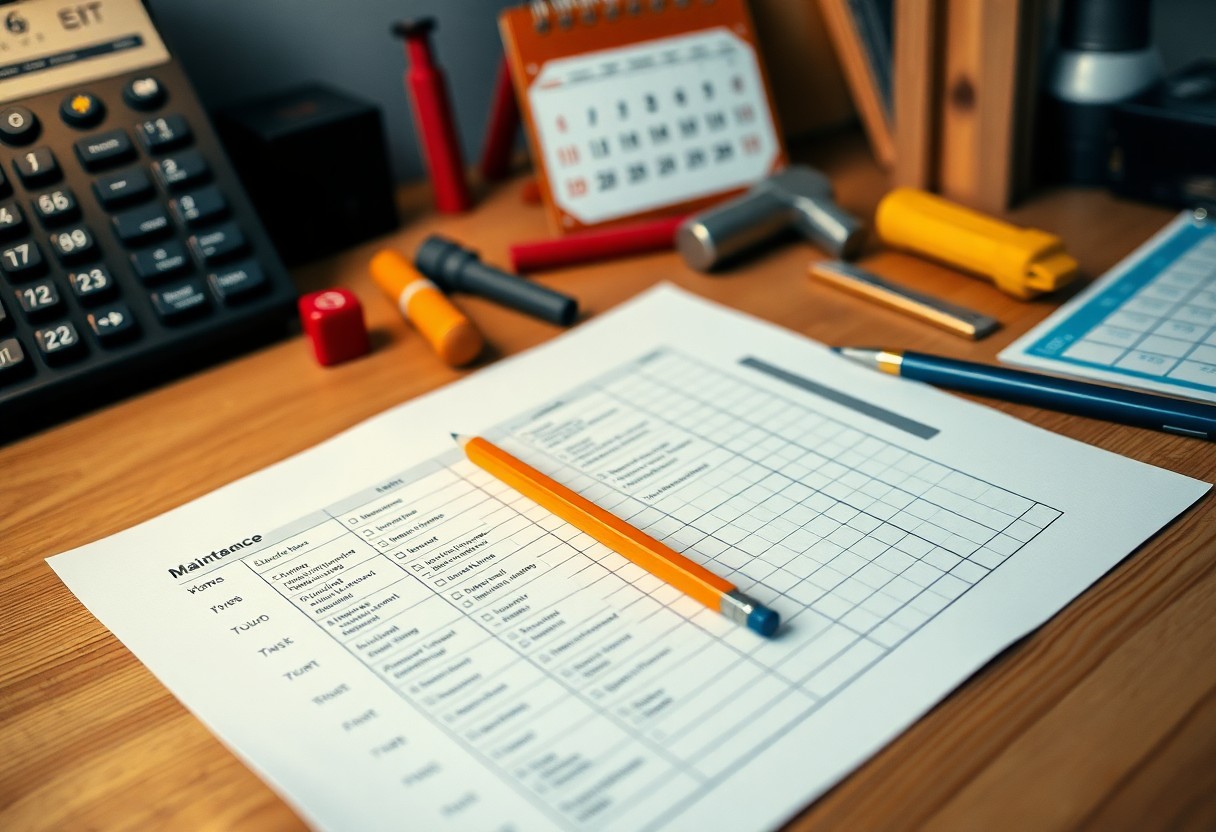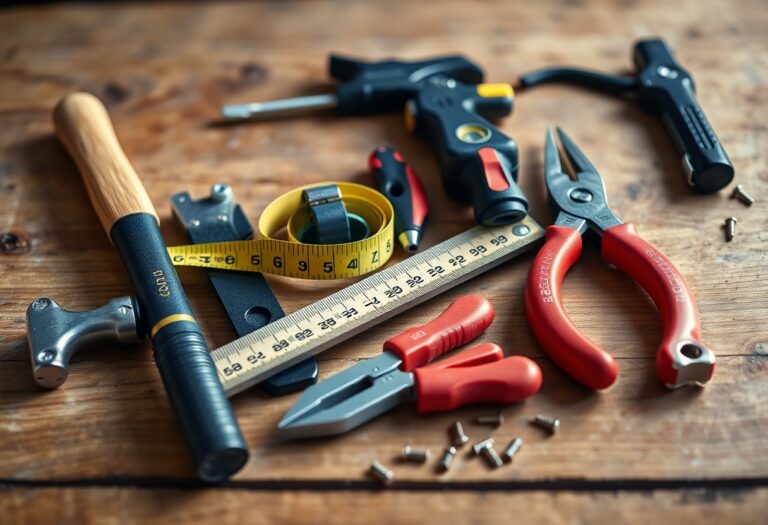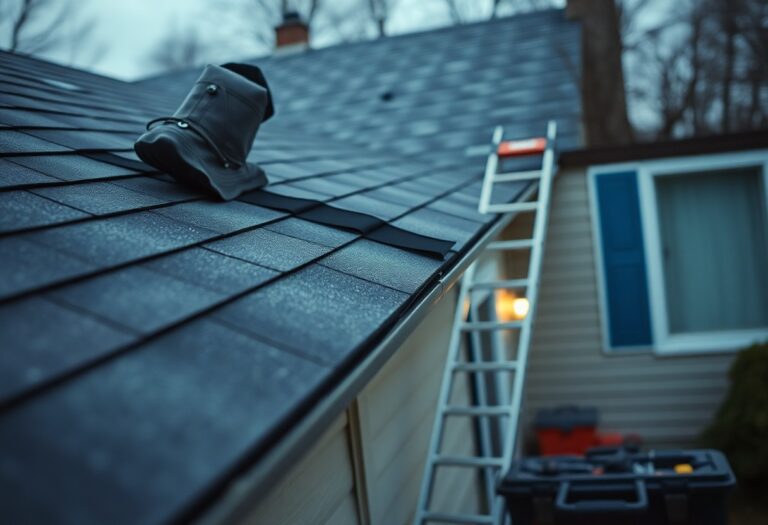Home Maintenance Schedule Template
You may find that keeping your home in top condition requires a bit of organization and planning. A home maintenance schedule template can help you stay on track with necessary tasks throughout the year, ensuring that important upkeep doesn’t slip through the cracks. By following a structured timeline, you can protect your investment, enhance safety, and maintain the comfort of your living space. In this post, you will discover how to create and utilize an effective home maintenance schedule tailored to your unique needs.
Importance of a Home Maintenance Schedule
A home maintenance schedule is important for ensuring your property remains in excellent condition. By regularly monitoring and addressing necessary repairs, you can prevent small issues from escalating into costly problems. Additionally, a systematic approach helps you allocate time and resources effectively, giving you peace of mind while maintaining the value of your home.
Benefits of Regular Maintenance
Benefits of regular maintenance extend beyond a comfortable living environment. By taking proactive measures, you can enhance the longevity of your home’s systems and appliances, reduce the likelihood of emergencies, and foster a safer atmosphere for you and your family. This diligent approach ultimately contributes to a more enjoyable and stress-free homeownership experience.
Cost-Effectiveness and Long-Term Savings
The adoption of a proactive maintenance schedule translates into significant cost-effectiveness and long-term savings. By addressing minor repairs early, you can avoid the expense of major renovations that may arise from neglect. Regular checks on critical systems, like plumbing and HVAC, ensure they operate efficiently, reducing utility bills and extending their functional lifespan.
Schedule regular inspections to catch issues before they require extensive repairs. For example, a small leak left unchecked can lead to water damage, mold, and costly fixes. By investing a small amount of time and resources in routine maintenance, you safeguard your home’s value and your finances, ultimately ensuring a well-kept and efficient living space for the long haul.
Creating Your Home Maintenance Schedule
Even the best-maintained homes benefit from a structured maintenance schedule. By prioritizing necessary tasks, you can ensure your home remains a safe and pleasant space. Start by identifying key areas that require routine upkeep, creating a calendar that encompasses seasonal needs, and integrating reminders to stay on track. This proactive approach will help you avoid costly repairs and keep your home in excellent condition all year round.
Assessing Your Home’s Needs
Around your home, different areas may require varying levels of attention. Take time to assess your unique space, looking at factors such as age, materials, and the local climate. Consider both interior and exterior aspects, including plumbing, electrical systems, and landscaping. This comprehensive evaluation will help you create a tailored maintenance schedule that meets your specific needs.
Recommended Frequency for Various Tasks
About the tasks you prioritize for maintenance, establishing a regular frequency is necessary for keeping your home in optimal condition. Some tasks, like changing air filters or cleaning gutters, should occur every few months, while others, such as inspecting the roof or examining the home’s foundation, may be best done annually.
In fact, a well-organized maintenance schedule can enhance your home’s longevity. For instance, seasonal tasks such as checking smoke detectors or servicing your HVAC system should be included in your fall and spring routines. Similarly, you might want to do a deep clean of your home quarterly. By understanding the appropriate intervals for each task, you can efficiently allocate time and resources, protecting your investment and ensuring a safe living environment.
Seasonal Maintenance Checklist
If you want to keep your home in top shape year-round, a seasonal maintenance checklist is important. Each season brings specific tasks that help look after your property, ensuring safety and efficiency. By following a structured approach, you can tackle maintenance before issues arise, saving you time and money in the long run.
Spring Maintenance Tasks
Around spring, it’s time to shake off the winter blues and focus on revitalizing your home. This is the perfect season for cleaning gutters, inspecting roofs, and checking the exterior for any damage. Also, remember to service your air conditioning unit to prepare for warmer months ahead.
Summer Maintenance Tasks
Tasks in the summer focus on keeping the outdoor areas of your home clean and functional. This includes mowing the lawn, trimming trees and shrubs, and cleaning patios and decks. You should also check your irrigation systems and repair any leaks before the heat of summer intensifies.
In addition, summer is an excellent time to inspect your windows and screens for any wear and tear, replacing damaged ones to improve ventilation and energy efficiency. Don’t forget to look into pest control measures as well, as summer often brings unwanted critters looking for shelter.
Fall Maintenance Tasks
Tasks during the fall should prepare your home for the impending cold weather. Begin by checking heating systems, cleaning out your chimneys, and ensuring that your insulation is intact. You should also check windows and doors for drafts that might increase heating bills.
Due to the falling leaves, it’s important to clean your gutters regularly during this time to prevent blockages. Additionally, inspecting roofing for any necessary repairs is wise before winter weather sets in. Taking care of these tasks now will help protect your home from potential winter damage.
Winter Maintenance Tasks
Below you will find a checklist for winter maintenance tasks important for ensuring your home remains safe and comfortable. Tasks include checking your heating system, sealing drafts, and insulating pipes to prevent freezing. You should also clear snow and ice from driveways and walkways to maintain safety for yourself and visitors.
It is important to monitor indoor humidity levels in winter as it can lead to problems such as mold or damage to wooden fixtures. Consider using a humidifier where needed. Regularly check smoke detectors and carbon monoxide alarms, ensuring they function properly during the heating season to keep your family safe.
Yearly Maintenance Timeline
Many homeowners overlook the importance of a yearly maintenance timeline. By implementing a structured schedule, you ensure that your home remains in top condition, preventing small issues from escalating into costly repairs. This timeline serves as a roadmap, guiding you through imperative tasks that keep your home safe and efficient throughout the year.
Annual Inspections
At the beginning of the year, it’s wise to conduct a thorough inspection of your property. This includes checking the roof for damage, inspecting plumbing systems for leaks, and reviewing electrical systems. By performing these inspections early, you can identify potential issues and address them before they worsen, ensuring the safety and comfort of your living space.
Major Repairs and Upgrades
With the right maintenance schedule, you can plan for major repairs and upgrades that enhance your home’s longevity and value. These tasks might include replacing the HVAC system, updating insulation, or renovating key areas such as the kitchen or bathroom.
Due to the substantial investment required for major repairs and upgrades, it’s beneficial to allocate funds in advance. By prioritizing these projects within your yearly timeline, you can budget effectively and avoid overwhelming costs. Additionally, scouting for seasonal sales or promotional offers can help offset expenses, making it easier for you to maintain a beautiful and functional home. Regularly assessing which upgrades could improve energy efficiency will also save you money in the long run, ensuring your home remains both comfortable and cost-effective.
Tools and Resources for Home Maintenance
Now that you have a maintenance schedule in place, it’s crucial to equip yourself with the right tools and access valuable resources. This will help you tackle tasks more efficiently and keep your home in top condition throughout the year. Understanding what tools to use and where to find reliable information can make all the difference in your home maintenance efforts.
Recommended Tools
Recommended tools for home maintenance include a versatile toolbox, which should contain crucials like a hammer, screwdrivers, pliers, a tape measure, and a level. Additionally, investing in a quality set of power tools, such as a drill and saw, can make larger projects manageable. A sturdy ladder and safety equipment, like gloves and goggles, are also important for safety and effectiveness when you work on repairs.
Online Resources and Apps
Below, you’ll find numerous online resources and apps that can simplify your home maintenance tasks. Websites like YouTube and home improvement blogs often feature detailed tutorials that guide you through repairs step-by-step. Additionally, there are specialized maintenance apps that allow you to track tasks, set reminders, and even monitor the condition of your home over time.
Plus, utilizing online platforms can enhance your DIY experience. Many apps offer virtual consultations with home maintenance experts, so you can get personalized advice when needed. Furthermore, forums and community groups can provide support, enabling you to share experiences and strategies with others who are also committed to maintaining their homes. Take advantage of these digital tools to streamline your home maintenance journey.
Staying Organized and Accountable
After you set up your home maintenance schedule, staying organized and accountable is necessary to ensure tasks are completed timely. Regularly checking off completed tasks not only gives you a sense of accomplishment but also helps you keep track of what still needs attention. By maintaining an orderly system, you’re less likely to overlook important maintenance, resulting in a well-kept home.
Tracking Completed Tasks
Among the best practices for accountability is tracking completed tasks systematically. You can use a simple checklist or a digital app that allows you to log your progress. This will help you visualize what you’ve accomplished over time, ensuring you stay on top of your home maintenance goals.
Setting Reminders and Alerts
About implementing reminders and alerts, these can serve as helpful nudges to keep you on track. Utilizing digital calendars, task management apps, or even physical sticky notes around your home can prompt you at the right times to take care of necessary maintenance chores.
Considering that life often becomes busy, setting reminders and alerts ensures that maintenance tasks are not forgotten. You can program alerts for seasonal inspections, filter replacements, or any periodic repairs. By customizing these notifications to suit your schedule, you’ll cultivate a consistent routine that effectively supports your home upkeep strategy.
To wrap up
Upon reflecting, using a Home Maintenance Schedule Template can significantly enhance your ability to keep your property in top condition. By establishing a systematic approach to tasks such as seasonal inspections and repairs, you not only extend the lifespan of your home’s systems but also ensure a safe and comfortable living environment. Investing time in creating and following this schedule empowers you to manage your maintenance effectively, ultimately saving you time and money in the long run. Embrace this proactive strategy to uphold the value and integrity of your home.







